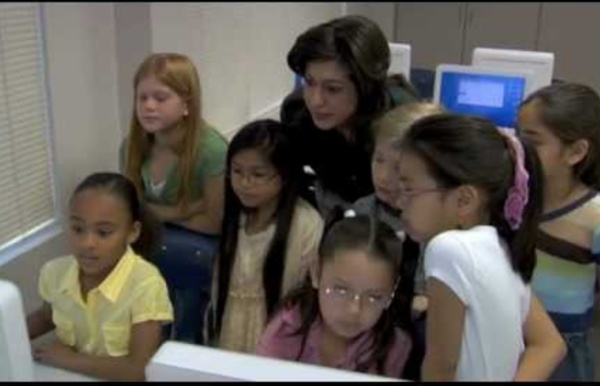



http://www.youtube.com/watch?v=nGTVjJuRaZ8
Related: Intercultural education for pupils aged 9-13 • TESP511Educational Technology and Mobile Learning: 8 Excellent Augmented Reality Apps for iPad In this post Educational Technology and Mobile Learning is providing you with a list of some awesome augmented reality apps for your iPad but before that let us first see what the concept of augmented reality is all about . Augmented reality is a relatively new digital phenomenon that is brought about by the recent development in the field of technology and particularly mobile technology. In augmented reality the line between the virtual world and the real one is blurred. Engineers use some sophisticated technologies to pull out graphics from television screen and computer display and integrate them into real world environments.
TEXT - Culturally Responsive Teaching & The Brain This school year, I have the privilege of working shoulder to shoulder with teachers who are rolling up their sleeves and asking hard questions about how they can better serve their under-performing students who are disproportionately English learners, poor students, and students of color. They are working to incorporate culturally responsive practices into their classrooms. I believe culturally responsive teaching (CRT) is a powerful method for accelerating student learning. But truth be told, most educators are not really sure what it is or what it looks like. For some, it seems mysterious. A number of leaders discount it because it seems too "touchy feely" or only focused on raising students' self-esteem, when they need to raise achievement levels.
Seven Habits of Highly Effective Intercultural Communicators In an increasingly interconnected world, intercultural communication skills are more important than ever. Many of us are finding ourselves conducting business with people from a variety of cultures. Such contexts require the creation of new communication practices that go beyond simply the mastery of whatever language we are using. I’ve identified seven communication habits of highly effective intercultural communicators, drawn from my training and consulting work with clients operating within intercultural business environments. 1. They take communication risks.
TEXT - Universal Design for Learning: Meeting the Needs of All Students Katherine, a speech-language pathologist in a large elementary school, works hard to provide appropriate and relevant services to students in general education classrooms. She doesn't do much pull-out, instead preferring to work in classrooms using adapted classroom materials. As a result, she spends a lot of time modifying materials and developing personalized resources for specific students. As she packs up her bag filled with paperwork to finish at home, she thinks, "There must be a better way to meet the needs of all the students on my caseload." Katherine's situation is common for school-based SLPs.
TeachUNICEF TeachUNICEF is a portfolio of free global education resources. Resources cover grades PK-12, are interdisciplinary (social studies, science, math, English/language arts, foreign/world languages), and align with standards. The lesson plans, stories, and multimedia cover topics ranging from the Millennium Development Goals to Water and Sanitation. Our mission is to support and create well-informed global citizens who understand interconnectedness, respect and value diversity, have the ability to challenge injustice and inequities and take action in personally meaningful ways. We hope that in providing engaging and academically rich materials that offer multiple voices, we can encourage the exploration of critical global issues while presenting opportunities to take action. What is UNICEF?
TEXT - 8 Ways to Get Real With Student Differentiation Last fall, the Brookes Publishing team created a little poster about student differentiation that took off in a big way. Check it out: The poster went viral as educators shared their love for the Fair is Not Always Equal philosophy—but some teachers asked the tough questions about student differentiation. Realistically, how can we find time to differentiate our teaching for 30 students every single day?
TEXT - Assessment, Flexible Grouping, and Research-Based Instructional Strategies: Powerful Tools for Co-Taught Classes By Tina Spencer, M.S., and Lee Anne Sulzberger, M.Ed. February/March 2013 Co-teaching is one option for delivering special education services to students with disabilities in general education classes (Friend, 2007). Within this model, two or more professionals deliver content grounded in purposeful instructional intensity to a diverse group of students in the same classroom.
TEXT - The Power of Words: On "Classics" and "Canon" (Opinion) The first step is admitting that your ideas need to change. I’ve been in a yearlong conversation with myself about “the canon.” I am, this year, teaching what I feel is a full-canon list (To Kill a Mockingbird, Lord of the Flies, Romeo and Juliet), as I’ve done in the past.
TEXT - Building Culturally Responsive Classrooms with Digital Content By Dr. Karen Beerer Recently, during one of the professional development events I occasionally facilitate as Discovery Education’s Vice President of Learning and Development, I asked a group of building-level school administrators, “What keeps you up at night?” This question, asked as part of the process of framing the day’s learning targets, at first elicited a few laughs and a number of comments about late night eating and the recent Super Bowl. However, as we drilled a little further into the conversation, the administrators identified the ongoing challenge of meeting the needs of a very diverse group of learners as their number one concern.